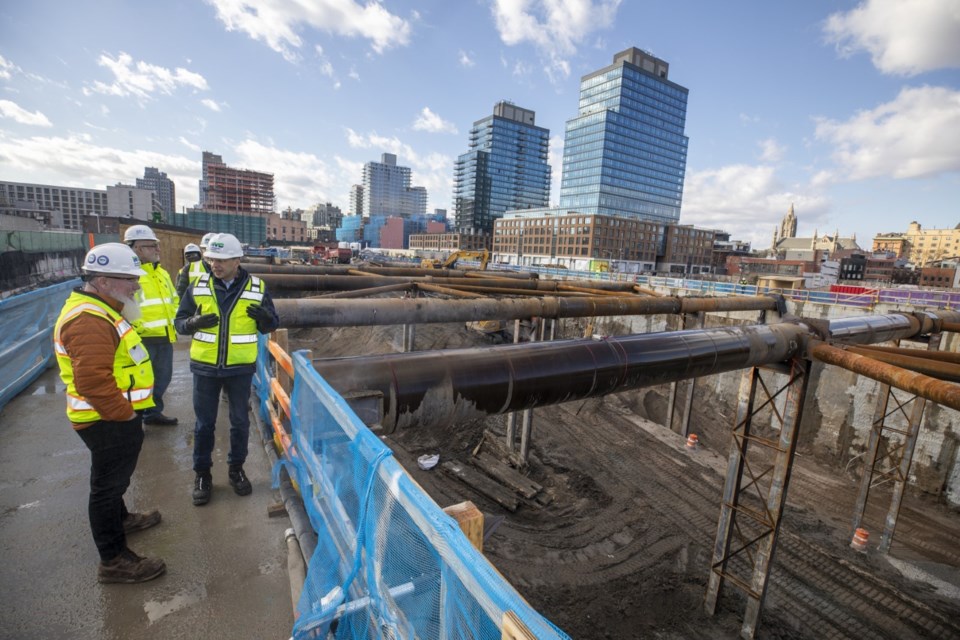The New York City Department of Environmental Protection on Tuesday said they finished the excavation for an eight-million-gallon underground tank that will intercept and store combined sewage that would otherwise overflow into the Gowanus Canal during rainstorms.
Finishing the dig six months in advance, the DEP said the next major stage of work is to construct the tank within the excavated area, according to a press release. This will start in May and continue through the summer 2026.
“The creativity and innovation to speed up this stage of work demonstrates DEP’s commitment to the Gowanus community," said DEP Commissioner Rohit T. Aggarwala. "As construction progresses, we remain focused on minimizing disruptions and ensuring the safety and well-being of the surrounding neighborhood.”
DEP broke ground on the project, located at the north end of the canal, bounded by Nevins Street, Butler Street and Degraw Street, in March 2023 with a schedule agreed upon with the U.S. Environmental Protection Agency, which has oversight of the project under the Superfund program. A second tank, located at the bend of the Gowanus Canal at 2nd Avenue and 5th Street, is also under construction. When the two tanks are completed, the top will be transformed to a 3.6-acre public space.
Like many areas in Gowanus, the site of the tank has historic contamination from manufactured gas plants that populated the area in the 19th century. To protect neighboring residents and businesses, as well as construction workers, DEP said it implemented real-time air quality monitoring and an air sampling program.
Additionally, the agency put in place strategies to manage odors from soil excavation, such as tarping, spraying soil with non-toxic odor-neutralizing foam, using a misting system similar to bathroom sprays, and conducting routine odor inspections, as residents have long complained about odors emanating in the area.




